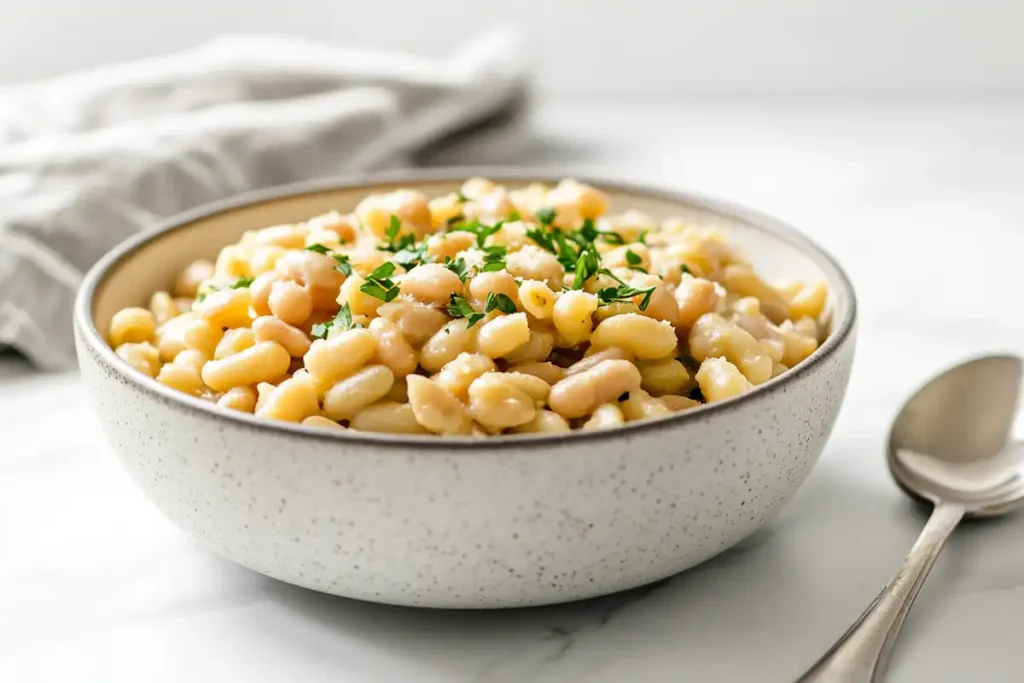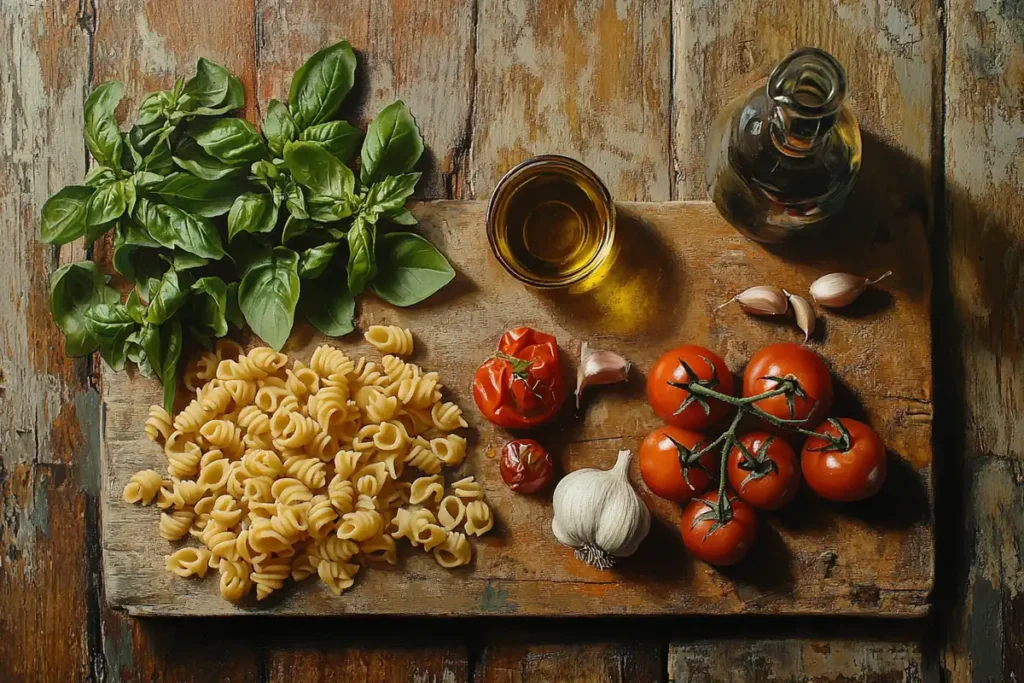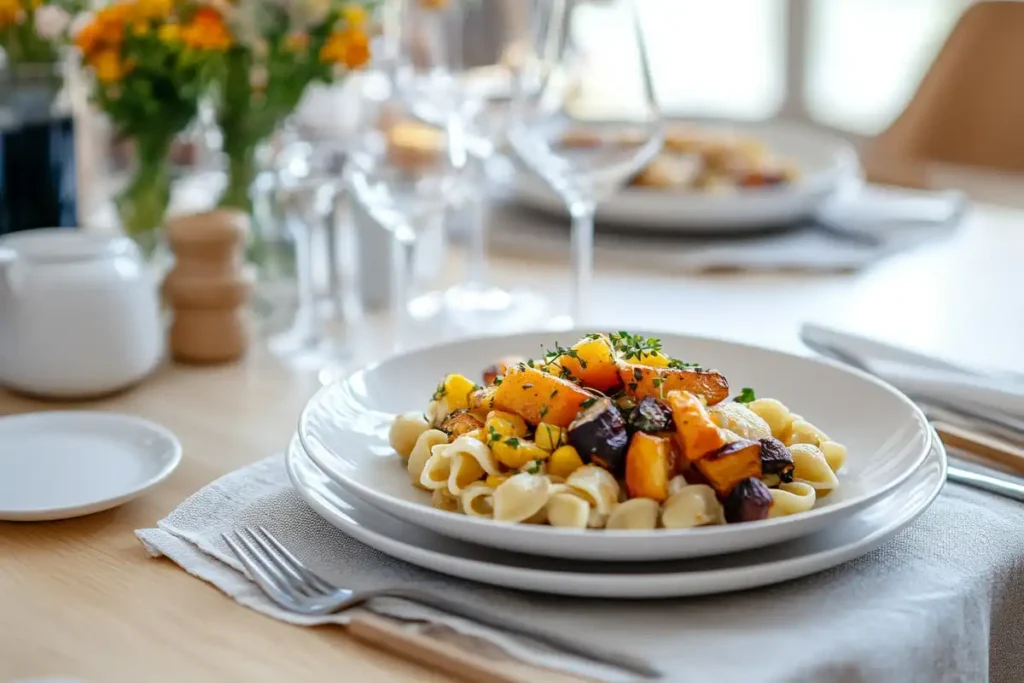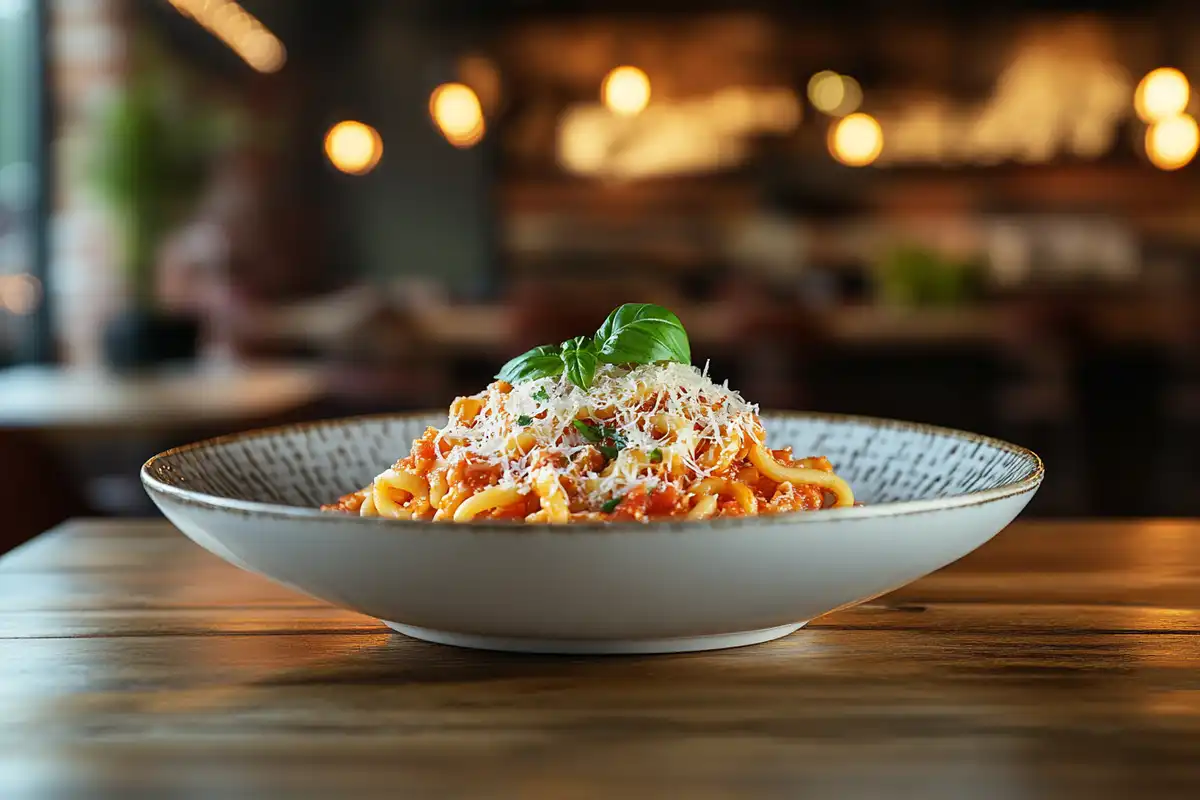Ditalini pasta has a charm that’s simply irresistible—tiny, tube-shaped morsels that work wonderfully in soups, salads, and beyond. Whether you’re crafting a hearty Pasta e Fagioli or looking to whip up a light and zesty dish for a quick meal, ditalini recipes are versatile, easy, and oh-so-satisfying. In this article, we’ll dive into everything from the history of this beloved pasta to classic recipes, cooking techniques, and even gluten-free alternatives. Let’s unravel the secrets of this little thimble-shaped pasta!
Understanding Ditalini Pasta
What is Ditalini?
Ditalini, which means “little thimbles” in Italian, is a small, tubular pasta that has earned a reputation for being both cute and functional. Its size makes it ideal for hearty soups like Minestrone and creamy pasta dishes, as it soaks up flavors beautifully. Whether you’re a seasoned chef or a home cook experimenting in the kitchen, ditalini pasta is a delightful ingredient to keep on hand.
Historical Background of Ditalini
The origins of ditalini are deeply rooted in Southern Italy, particularly in regions like Sicily and Campania. In these areas, families used to prepare pasta in various shapes, each tailored to specific dishes. Ditalini was a natural choice for soups, as its small size and hollow structure allowed it to absorb broths and sauces effectively. Over time, its popularity spread across Italy and beyond, finding a place in the hearts (and kitchens) of pasta lovers everywhere.
Culinary Uses of Ditalini
When it comes to versatility, ditalini doesn’t disappoint! This petite pasta is a star in classics like Pasta e Fagioli, where it complements creamy beans and savory herbs. It also shines in fresh, vibrant pasta salads, pairing well with crisp vegetables, tangy dressings, and even legumes. For a comforting meal, toss ditalini with roasted vegetables and a luscious sauce—delicious and easy!
Whether you’re crafting traditional Italian recipes or experimenting with new ones, ditalini proves that good things do come in small packages.
Preparing the Perfect Ditalini Recipe
Classic Ditalini Recipes
Ditalini pasta has a way of sparking creativity in the kitchen while staying deeply rooted in tradition. This small yet mighty pasta shape, beloved for its adaptability, has become a staple in both classic Italian dishes and modern culinary experiments. Whether you’re crafting a comforting bowl of soup to warm your soul or whipping up a fresh and vibrant salad for a light lunch, ditalini offers endless possibilities to satisfy your cravings.
Its unassuming size allows it to seamlessly blend with hearty beans, tender vegetables, and flavorful sauces, making it a star in recipes like Pasta e Fagioli or zesty pasta salads. Yet, ditalini also holds its own in innovative creations, proving that sometimes the tiniest ingredients pack the biggest punch.
In this section, we’ll dive into some classic ditalini recipes that celebrate the pasta’s charm and versatility. These dishes are not just about flavor—they’re a tribute to the simplicity and elegance that make ditalini a favorite in kitchens around the globe. Get ready to be inspired by these timeless and creative ways to use this delightful pasta!
Ditalini with Roasted Tomato Sauce and Goat Cheese
This dish is a harmonious blend of flavors, featuring ditalini pasta tossed in a rich, roasted tomato sauce, and topped with creamy goat cheese. The smoky sweetness of roasted tomatoes pairs beautifully with the tangy cheese, creating a dish that’s satisfying and elegant.
- Ingredients:
- Ditalini pasta
- Fresh, ripe tomatoes
- Garlic and olive oil
- Goat cheese
- Basil leaves for garnish
- Preparation:
Roast the tomatoes with garlic and olive oil until they caramelize. Blend the mixture into a smooth sauce, then toss it with al dente ditalini. Finish with a sprinkle of goat cheese and fresh basil.
This recipe is perfect for a cozy family dinner or a quick yet indulgent lunch!
Pasta e Fagioli with Ditalini

A quintessential Italian comfort food, Pasta e Fagioli brings together creamy cannellini beans, savory herbs, and tender ditalini in a hearty, one-pot wonder.
- Ingredients:
- Ditalini pasta
- Cannellini beans (or similar white beans)
- Onion, celery, and carrots (classic mirepoix)
- Garlic and vegetable broth
- Parsley for garnish
- Preparation:
Sauté the mirepoix in olive oil until fragrant. Add garlic, broth, and beans, allowing the flavors to meld. Cook the ditalini separately, then stir it into the soup. Garnish with parsley, and enjoy a bowl of warmth and tradition!
(Pro Tip: Learn more about the health benefits of the Mediterranean diet here.)
Ditalini with Asparagus and Tomato
For a light and fresh option, pair ditalini with tender asparagus and juicy tomatoes. This dish bursts with color and flavor, making it perfect for a quick, healthy meal.
- Ingredients:
- Ditalini pasta
- Fresh asparagus
- Cherry tomatoes
- Lemon zest
- Parmesan cheese
- Preparation:
Blanch the asparagus and sauté with halved cherry tomatoes. Toss with cooked ditalini, a splash of olive oil, and a dash of lemon zest. Finish with a generous shaving of Parmesan.
This recipe is a go-to for springtime dinners or when you crave something light yet fulfilling.
Ditalini pasta truly shines in these recipes, each offering a unique flavor profile and a chance to experiment with fresh ingredients. Up next, we’ll uncover the techniques that ensure every ditalini dish is a masterpiece.
Cooking Techniques and Tips
Mastering Ditalini Preparation
Cooking ditalini pasta might seem straightforward, but there are a few key techniques to ensure your dishes turn out perfectly every time. From selecting the best ingredients to achieving the ideal texture, these tips will elevate your pasta game.
Selecting Quality Ingredients

The foundation of any great dish lies in its ingredients. For a standout ditalini recipe, choose high-quality pasta made with 100% durum wheat semolina. This ensures the pasta holds its shape and doesn’t become mushy during cooking.
- Fresh vegetables: Crisp asparagus, ripe tomatoes, or sweet bell peppers work wonders in ditalini dishes.
- Authentic cheeses: Parmesan or pecorino adds a nutty, savory finish.
- Olive oil: Opt for extra virgin olive oil for its robust flavor and health benefits.
(Pro Tip: Explore the wide variety of Italian pasta shapes and their uses here.)
Cooking Ditalini to Al Dente
“Al dente” translates to “to the tooth,” referring to pasta that’s firm but not undercooked. Cooking ditalini to this texture is essential for preserving its bite and ensuring it holds up in soups and salads.
- Use plenty of water—about 4 quarts per 12 ounces of pasta.
- Add a generous pinch of salt to enhance the pasta’s flavor.
- Cook ditalini for 1-2 minutes less than the package instructions suggest, then test it for doneness.
Don’t forget to save a cup of pasta water! Its starchiness makes it perfect for thickening sauces.
Pairing Ditalini with Sauces
Thanks to its shape, ditalini pairs beautifully with a wide range of sauces. For light and zesty options, toss it with olive oil-based dressings or citrus vinaigrettes. For something heartier, go for cream-based sauces or rich tomato blends.
- Light Pairings: Ditalini with lemon zest, parsley, and a drizzle of olive oil.
- Hearty Pairings: Ditalini with a chunky tomato and vegetable ragu.
This adaptability makes ditalini a go-to pasta for experimenting with flavors and cuisines.
With these tips, your ditalini dishes will consistently impress, whether you’re crafting a classic Italian meal or inventing your own creations. In the next section, we’ll focus on nutrition and how to make these recipes even healthier!
Nutritional Information and Dietary Considerations
Health Aspects of Ditalini Dishes
Ditalini pasta is not just a versatile culinary ingredient; it’s also a fantastic option for those seeking balance in their diet. This small, tube-shaped pasta can be transformed into nutrient-packed meals when prepared with care and thoughtfulness. Whether you’re looking to increase your daily vegetable intake, reduce carbohydrate consumption, or explore gluten-free alternatives, ditalini adapts beautifully to meet a variety of dietary goals.
Its compact size makes it perfect for blending with colorful vegetables like spinach, tomatoes, or zucchini, creating dishes that are as visually appealing as they are healthy. Additionally, swapping traditional ditalini for gluten-free versions made from chickpea or rice flour allows those with dietary restrictions to enjoy its charm without compromise.
No matter your lifestyle or nutritional preferences, ditalini’s flexibility ensures there’s always a way to craft wholesome, satisfying meals. With the right ingredients and a bit of creativity, you can enjoy dishes that not only taste incredible but also contribute to a healthier, more balanced way of eating.
Nutritional Profile of Ditalini
Ditalini, like most traditional pasta, is primarily a source of carbohydrates, which are essential for providing energy. A typical serving contains:
- Approximately 200 calories (per 2 ounces dry)
- 7 grams of protein
- Less than 1 gram of fat
- A small amount of dietary fiber
When paired with nutrient-rich vegetables, lean proteins, and healthy fats, ditalini dishes can be both satisfying and nutritious.
Incorporating Vegetables for Added Nutrition
One of the easiest ways to enhance the nutritional value of your ditalini recipes is by adding plenty of fresh vegetables. Consider these combinations:
- For soups: Add kale, carrots, and zucchini for a boost of vitamins A and C.
- For salads: Mix in cucumbers, cherry tomatoes, and red bell peppers for a refreshing crunch.
- For baked dishes: Include roasted eggplant, spinach, or mushrooms to layer on flavor and fiber.
Vegetables not only add color and texture but also increase the dish’s fiber content, keeping you fuller for longer.
Gluten-Free Alternatives

For those with gluten sensitivities or dietary restrictions, gluten-free ditalini made from rice, corn, or chickpea flour is a fantastic substitute. These options are just as tasty and versatile as traditional ditalini.
To prepare gluten-free ditalini:
- Follow package instructions closely, as gluten-free pasta can overcook quickly.
- Toss it immediately with your sauce to prevent sticking.
Explore other gluten-free pasta alternatives and tips here.
By focusing on fresh, wholesome ingredients and mindful substitutions, you can enjoy ditalini recipes that align with your health goals without sacrificing flavor. Next, we’ll address some common questions about ditalini pasta.
Frequently Asked Questions (FAQs)
What does ditalini mean in Italian?
In Italian, ditalini translates to “little thimbles.” The name perfectly describes the pasta’s small, cylindrical shape, which looks like miniature sewing thimbles. This shape is more than just aesthetic—it’s designed to hold onto sauces and broths, making it ideal for soups like Minestrone and Pasta e Fagioli. The name also reflects Italy’s tradition of crafting pasta shapes tailored to specific culinary purposes, each with its unique name and role.
Is ditalini pasta the same as macaroni?
Although ditalini and macaroni may seem similar at first glance, they are distinct in both shape and use. Ditalini is a smaller, straight, and uniform tube, whereas macaroni is usually slightly curved and larger. Macaroni is often used in baked dishes like mac and cheese, while ditalini excels in soups and lighter dishes because of its smaller size and ability to soak up broths. However, in a pinch, macaroni can be a substitute for ditalini if the latter isn’t available.
What happened to ditalini pasta?
Ditalini pasta hasn’t gone anywhere—it’s still widely popular in Italian and Mediterranean cuisines. However, its availability might vary depending on where you shop. While some grocery stores carry it in abundance, others may stock it only occasionally. Specialty Italian markets or online retailers are excellent sources if you can’t find it locally. Thanks to its versatility, ditalini continues to hold its place in traditional and contemporary recipes alike.
What is ditalini pasta similar to?
If you can’t find ditalini or want to experiment with similar shapes, there are plenty of alternatives to try. Tubettini, for example, is a slightly smaller version of ditalini that works well in soups and salads. Small elbow macaroni is another close match, offering a bit of curve to your dishes. Other options include pastina, which is ideal for brothy soups, or orzo for recipes requiring a similar bite-sized texture. The small size and versatility of these substitutes make them perfect stand-ins for ditalini in most recipes.
Conclusion
Ditalini pasta, with its adorable shape and incredible versatility, is a true gem of Italian cuisine. From its humble beginnings in Southern Italy to its starring role in beloved dishes like Pasta e Fagioli, ditalini continues to win hearts (and taste buds) worldwide. Its ability to adapt to soups, salads, and hearty meals makes it a must-have in any kitchen.
By mastering simple cooking techniques, choosing fresh ingredients, and exploring creative pairings, you can craft ditalini recipes that cater to any taste or dietary need. Whether you’re a fan of classic Italian flavors or experimenting with gluten-free alternatives, ditalini always delivers.
So, grab a box of ditalini and let your culinary imagination run wild. There’s no better time to embrace the art of this tiny but mighty pasta.

